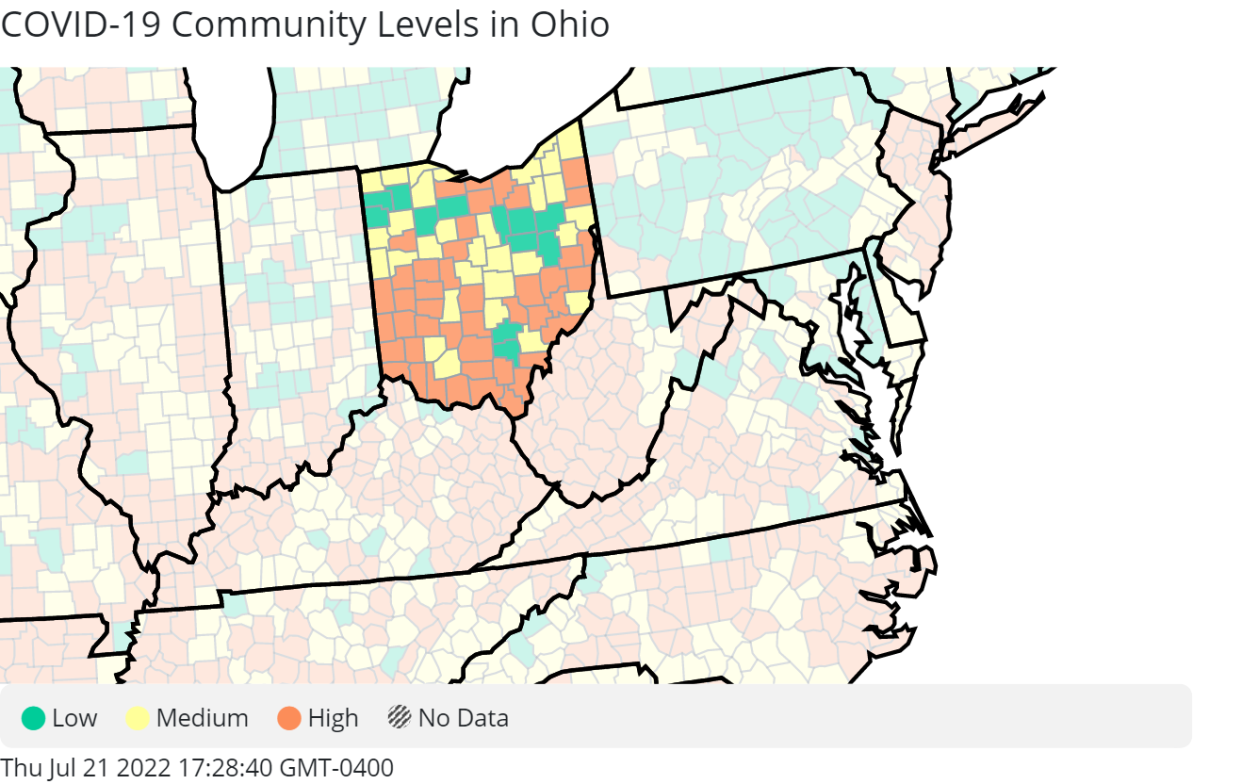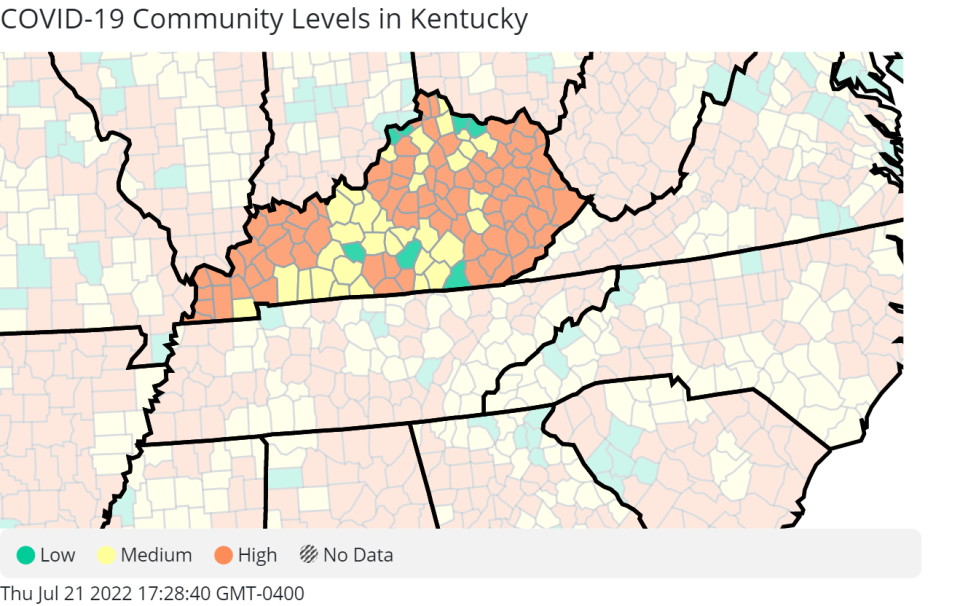Indoor masking recommended in 8 Greater Cincinnati counties: CDC upgrades COVID-19 level to 'high'

The COVID-19 risk level for eight counties in the region has been upgraded to the highest level, triggering a mask recommendation in indoor public settings regardless of vaccination status from the Centers for Disease Control and Prevention.
Four southwest Ohio counties in the Greater Cincinnati region – Butler, Clermont, Hamilton, Warren – were upgraded to high COVID-19 community levels late Thursday after Hamilton County jumped to medium last week.
Two of northern Kentucky's three most populous counties, Boone and Kenton, were also leveled up to red, the highest community level of COVID-19, while Grant and Gallatin counties also became high risk.
More: BA.5 makes up nearly 80% of new COVID-19 cases. Here's what to know about the subvariant
More: New BA.5 variant now almost half, if not more, of new COVID-19 cases in Ohio
An upgrade to red triggers these recommendations from the CDC:
Wear a well-fitting mask indoors in public, regardless of vaccination status (including in K-12 schools and other indoor community settings).
If you are immunocompromised or high risk for severe disease: Wear a mask or respirator that provides you with greater protection; Consider avoiding non-essential indoor activities in public where you could be exposed; Talk to your healthcare provider about whether you need to take other precautions (e.g., testing); Have a plan for rapid testing if needed (e.g., having home tests or access to testing); Talk to your healthcare provider about whether you are a candidate for treatments like oral antivirals, PrEP, and monoclonal antibodies.
If you have household or social contact with someone at high risk for severe disease: consider self-testing to detect infection before contact; consider wearing a mask when indoors with them.
Stay up to date with COVID-19 vaccines and boosters.
Maintain improved ventilation throughout indoor spaces when possible.
Follow CDC recommendations for isolation and quarantine, including getting tested if you are exposed to COVID-19 or have symptoms of COVID-19.

The CDC determines COVID-19 community levels by looking at the number of hospital beds being used, hospital admissions and the total number of new COVID-19 cases per population in an area.
Hospitalizations have increased steadily over the last three weeks according to data from the Health Collaborative, the coordinating group for the region's 40 hospitals. After hovering around 100, hospitalizations increased to 125, then 181, and to 197 on Thursday, said Tiffany Mattingly, the collaborative's vice president of clinical strategies.
"Six of the eight counties in Region 6 of southwest Ohio are in that high level, which at this point means masks are recommended in indoor spaces," Mattingly said. "So from a public safety messaging standpoint, we want to make sure people are aware of that, that we're at a transmission level and a hospitalization level that is concerning enough that masks are an important prevention factor when indoors."
Mattingly said the predominant variant locally is the BA.5 omicron subvariant, which is highly contagious but isn't as severe as some of the previous COVID-19 variants.
While hospitalizations have increased, the number of COVID-19 patients in the intensive care unit have largely stayed put. Though in the last week, the region saw an increase from 22 to 30 ICU patients.
Mattingly said not all patients hospitalized were hospitalized with COVID-19 however, adding that there are some "incidental cases" where a patient is hospitalized for another ailment and while in the hospital became infected with COVID.
"Some of those patients will require treatment for COVID while in the hospital," she added.
This article originally appeared on Cincinnati Enquirer: Cincinnati-area counties upgraded to high community COVID level

